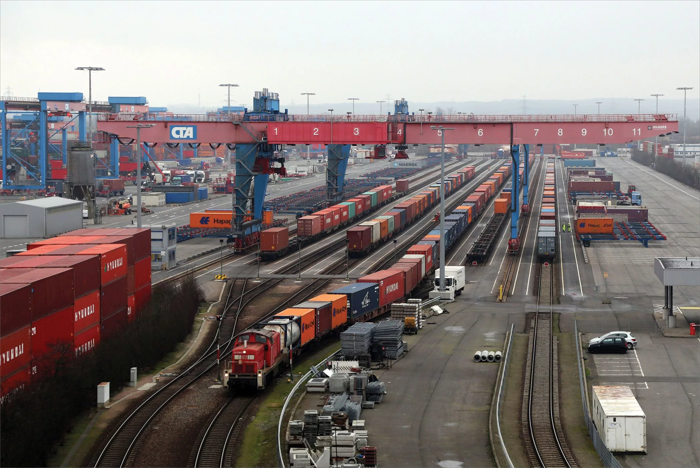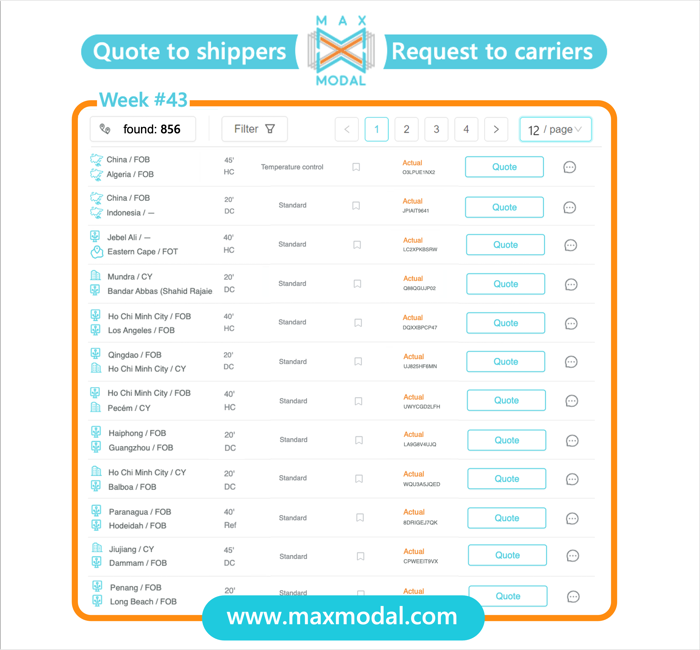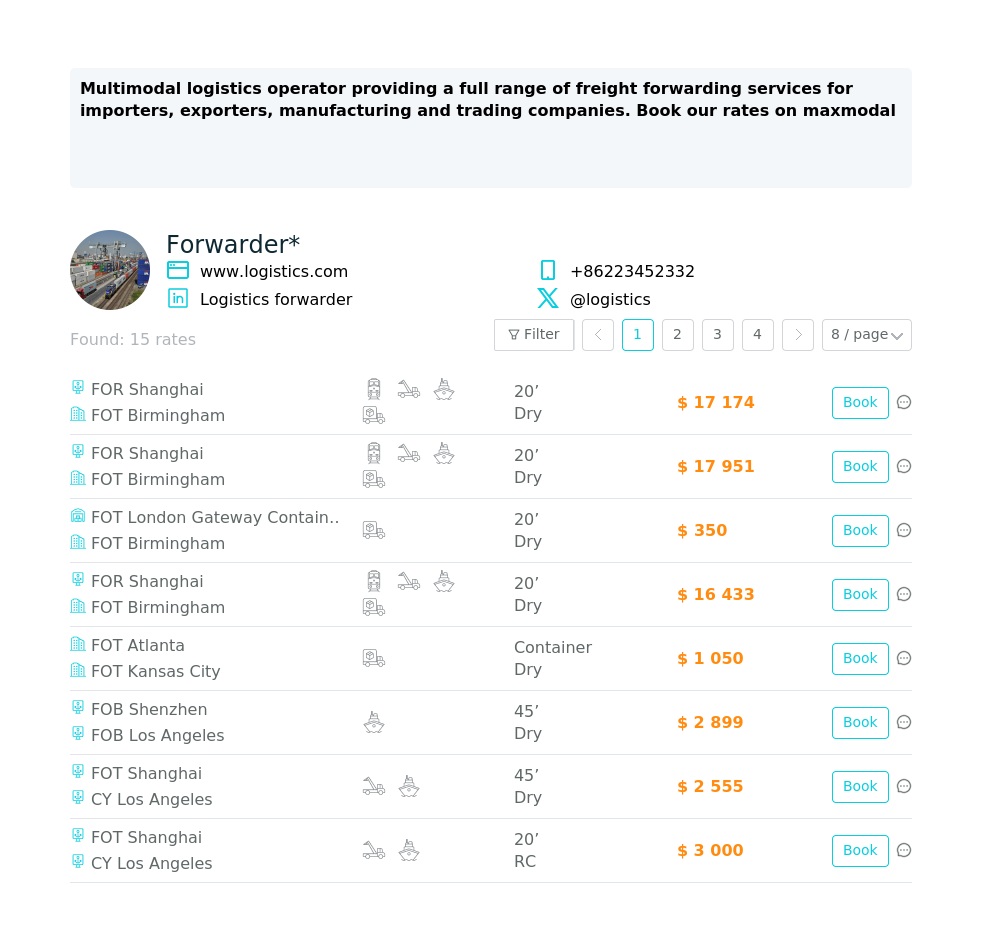International Relocation companies play a pivotal role in facilitating the global mobility of individuals and organizations. Whether you are an expatriate moving abroad for a job, a corporation relocating employees to establish a new presence overseas, or a family embarking on an international adventure, the services provided by these specialized companies are invaluable. This article will delve into international relocation services, shedding light on the benefits, challenges, and costs associated with such a significant transition.
Benefits of International Relocation Services:
1. Professional Expertise: One of the primary advantages of hiring an International Relocation company is their expertise in navigating the complex web of international laws, regulations, and paperwork. They can assist you in obtaining the necessary visas and permits, ensuring a smooth transition to your new destination.
2. Customized Solutions: These companies offer tailored relocation solutions to meet the unique needs of their clients. From planning the move to finding suitable housing and schools, they take care of every detail, reducing the stress of international relocation.
3. Global Network: International relocation companies have an extensive network of partners and agents worldwide. This network allows them to provide comprehensive support in various countries, ensuring a seamless transition and settling-in process.
4. Time-Saving: Managing an international move can be time-consuming and overwhelming. By outsourcing the process to professionals, you free up your time to focus on other critical aspects of your personal or professional life.
5. Cultural Orientation: Many relocation companies offer cultural training, helping individuals and families adapt to their new environment. This cultural orientation can ease the process of assimilation, making it a smoother experience for everyone involved.
Challenges of International Relocation Services:
1. Cost: While international relocation services offer numerous benefits, they come at a price. Relocating abroad can be expensive, and the fees for professional services can add to the overall cost.
2. Cultural Adjustment: Adapting to a new culture, language, and way of life can be challenging. Even with cultural orientation programs, the initial adjustment period can be overwhelming.
3. Logistical Challenges: International moves involve many logistical challenges, including shipping personal belongings, customs regulations, and coordinating the timeline of the action. These challenges can be particularly daunting when moving to countries with stringent import restrictions.
4. Legal and Immigration Hurdles: Navigating the legal and immigration processes of a foreign country can be daunting. Payment or issues in obtaining the necessary permits and visas can disrupt your relocation plans.
5. Separation from Home: The emotional strain of leaving behind one's home country, family, and friends can be a significant challenge in international relocation. Coping with homesickness and maintaining long-distance relationships can be challenging.
Costs of International Relocation Services:
The costs of international relocation services vary widely, depending on several factors, including the destination, the volume of belongings being moved, and the specific services requested. Generally, the cost can be broken down into several components:
1. Consultation Fees: Initial consultations with relocation experts often incur a fee. This fee covers the evaluation of your needs and the development of a customized relocation plan.
2. Moving and Shipping Costs: This includes the cost of packing, shipping, and unpacking your belongings. The volume of your possessions and the distance to your destination are major cost determinants.
3. Visa and Immigration Fees: These are fees associated with securing the necessary permits and visas for your international move.
4. Housing and Destination Services: Costs related to finding suitable housing, schools (if you have children), and other destination-specific services.
5. Miscellaneous Expenses: These may include travel costs, cultural orientation programs, and other unforeseen expenses that can arise during relocation.
In conclusion, international relocation companies offer many benefits, making international moves more manageable and less stressful. However, they come with challenges, including the financial burden of their services. When considering such a move, it's essential to weigh the benefits against the costs and be prepared for the inevitable challenges of relocating to a new country. Ultimately, choosing to utilize international relocation services should align with your needs and circumstances.
Chevron shipping do end to end relocation globally.
For More details please contact us .
Thank you

dear Damadar, all queries are in request management section.
Hi
Please send your query.
Sea shipping rates reached a new low last week, according to Drewery’s World Container Index, which saw a 2 per cent decrease to 1,342 US dollars per 40ft container. The rate was 57 per cent lower than the same week last year. Overall, in 2023, sea shipping rates have decreased by 60 per cent, increasing competition with intercontinental rail significantly. The situation could intensify even more in the coming years

According to CMA CGM, westbound transatlantic ocean rates have now hit “unsustainable levels”.
The French carrier announced a raft of FAK (freight all kinds) increases on Friday, an endeavour to drive rates back up on a route that has become, what one liner executive described to The Loadstar as, “a total disaster”.
Indeed, Xeneta’s XSI North Europe to US east coast average rate per 40ft slumped from $7,700 a year ago to just $1,327 last week.
Moreover, The Loadstar recently saw a rate offer to a UK-based forwarder at below $1,000 per 40ft for relatively small-volume shipments from Liverpool to New York.
From 23 November, the French carrier will raise its FAK rates from North Europe and the Mediterranean to the US and Canadian east coast, with, for example, its base rate for a 40ft from Rotterdam to New York being $1,600.
This is still well short of average rates achieved by transatlantic carriers in 2019. Prior to the pandemic, the tradelane was considered to be one of the most resilient, compared with the extremes of volatility seen on Asian export routes.
Pre-Covid, headhaul rates for a 40ft from North Europe to the US east coast had hovered at around $2,000, and the market was known by carriers specialising in the tradelane as “robust but unexciting”.
“We never expected to make much money out of the transatlantic, but we certainly didn’t expect to lose our shirts on it,” a carrier contact told The Loadstar recently. “At the moment, it’s a total disaster,” he added.
The transatlantic was one of the last trades to experience the liner rate explosion contagion of the pandemic era. In fact, the surge in transatlantic rates was indirectly triggered by a boom on the transpacific, when carriers redeployed ships to the more lucrative tradelane.
Shippers also complained about shortages of equipment as carriers chose to redistribute boxes to the Far East. That, and the difficulty of getting space on the depleted transatlantic fleet, inevitably resulted in huge rate spikes.
But when demand on the transpacific and Asia-Europe trades hit the wall last September, carriers looked at the high rates still achievable on the transatlantic and piled in more capacity and upgrades.
The higher rates on the transatlantic also encouraged new entrants to the route, including Ellerman City Liners, which closed its Asia-North Europe loops and redeployed the tonnage to the North Atlantic.
However, the big increase in supply on the transatlantic, from capacity upgrades by CMA CGM and its peers, inevitably resulted in a collapse in freight rates to levels well below their historical average.

Uzbekistan has made a number of proposals to expand cooperation between SCO member states in the transport sector, Uzbek Prime Minister Abdulla Aripov said at the 22nd meeting of the Council of Heads of Government of the Shanghai Cooperation Organisation countries in Bishkek on 26 October.
According to AKI Press, Abdulla Apripov recalled that during the SCO Summit in July, Uzbek President Shavkat Mirziyoyev called the SCO region a space of enormous economic opportunities, as well as a platform and resource base for the development of all countries of the association.
The Uzbek Prime Minister then proposed strengthening transport and communications links in the SCO region.
He noted the active promotion of projects for the development of north-south and east-west highways. According to Abdulla Aripov, the start of construction of the China-Kyrgyzstan-Uzbekistan railway is particularly important.
“We are in favour of increasing multimodal transport along this route, as well as through Afghanistan to the ports of Iran and Pakistan,” said Prime Minister Aripov.
The implementation of such projects will reduce transport costs for countries in the region by a third.
The Uzbek government also proposed the development of a unified map of transport links between SCO member states.
Abdulla Aripov expressed hope that these issues would be discussed at the first SCO Transport Forum in Tashkent on 1 November.

These are just a few examples of new requests at week #43. To get more fresh inquiries and\or the best quotes click here or push the «request management» button in the left menu.

Looking for a reliable partner for cold chain transportation (agricultural products, seafood, etc.) for import and export?
Tân Nam Chinh is the most suitable and trustworthy choice for you! 🚛 🐟 🍌 ✈ 🛳
👍 With over 100 container trucks ready to serve, Tân Nam Chinh guarantees the most competitive prices for container transportation on the North-South route.
👍 Specializing in sea freight to key markets such as China, India, South Korea, Taiwan, Japan, the Netherlands, and the United States (EU), with over 18 years of experience, we promise to provide the best service for you.
👍 We also offer short-term rental of refrigerated containers, large cold storage facilities, agricultural product processing, and even packaging material rental services when processing at the factory (such as durian, bananas, dragon fruit, etc.).
📑 In addition, Tân Nam Chinh provides customs clearance, inspection, and CO certification services for agricultural and frozen seafood products. We will help you quickly and conveniently complete all import and export procedures

Great! Where to see your freight rates here?
Ocean carriers are planning a wave of sizeable FAK rate hikes across the major east-west tradelanes next month, in an attempt to swivel voyage results back into the black.
And, with the 2024 budget season looming, the shipping lines will want to jettison unprofitable cargo from their customer portfolios.
For example, MSC this week announced new freight rates, effective 17 November, from the Mediterranean and North Europe to the US, Canada and Mexico, including a $4,400 per 40ft base rate from Antwerp to New York.
Container spot rates on the transatlantic have collapsed by around 80% over the past 12 months, driven down by carrier capacity upgrades and new market entrants – for instance, Xeneta’s XSI North Europe to US east coast component this week was down at $1,336 per 40ft.
Meanwhile, the Hapag-Lloyd and CMA CGM-led circa-$1,800 per 40ft new Asia-North Europe FAK rates, valid from 1 November and supported by radical capacity management, are starting to have some impact on the market.
Indeed, a UK-based shipper told The Loadstar his November rates from all but one of his regular carriers this week had doubled.
However, this has yet to be reflected in the Asia-North Europe container spot indices, which remained flat this week at just under $1,000 per 40ft.
Moreover, according to Singapore-based AGX, a collaboration platform for forwarders and importers, there is still some doubt whether carriers will be able to get a decent percentage of the rate hikes to stick.
“NVOCC November rates are now $1,100 per 40ft for the month, with the expectation that this will go down after the first one or two sailings,” said AGX this morning.
On the transpacific, carriers have underpinned container spot rates with a huge blanking programme around the Chinese Golden Week holiday, peaking next week with North American west coast terminals receiving 19 fewer vessels than advertised.
This was evidenced by Signal operational data from the port of Los Angeles, which shows only 11 vessels due to arrive next week, compared with 17 this week and 18 the following week.
As a consequence of their judicious capacity management, carriers have been able to stabilise spot rates, with for instance, Drewry’s US west coast component edging down by just 1% this week, to $1,979 per 40ft, while spot rates for the US east coast were unchanged at $2,629.
Ocean carriers are under considerable pressure, particularly on the east-west routes, and the loss-making voyage












